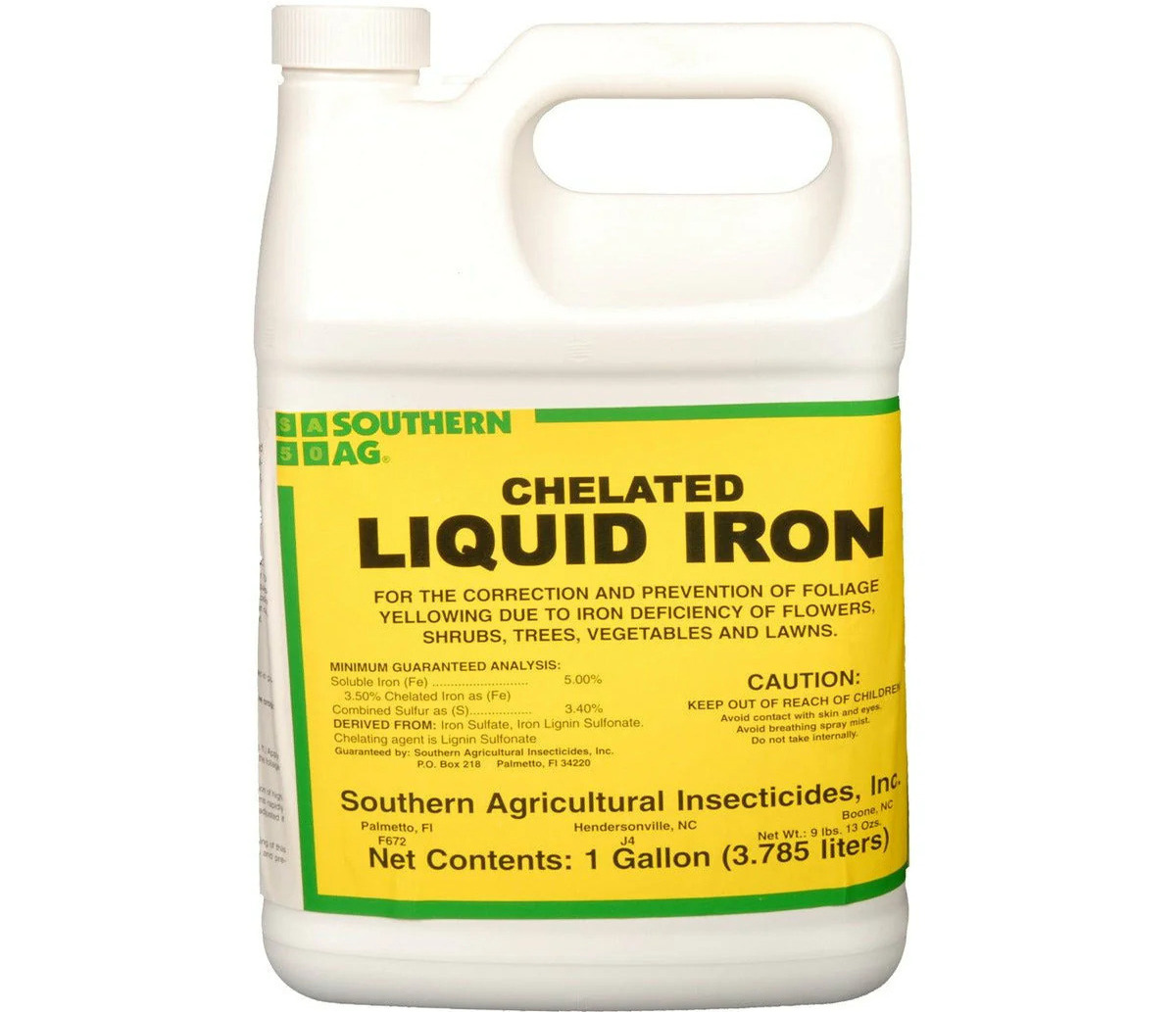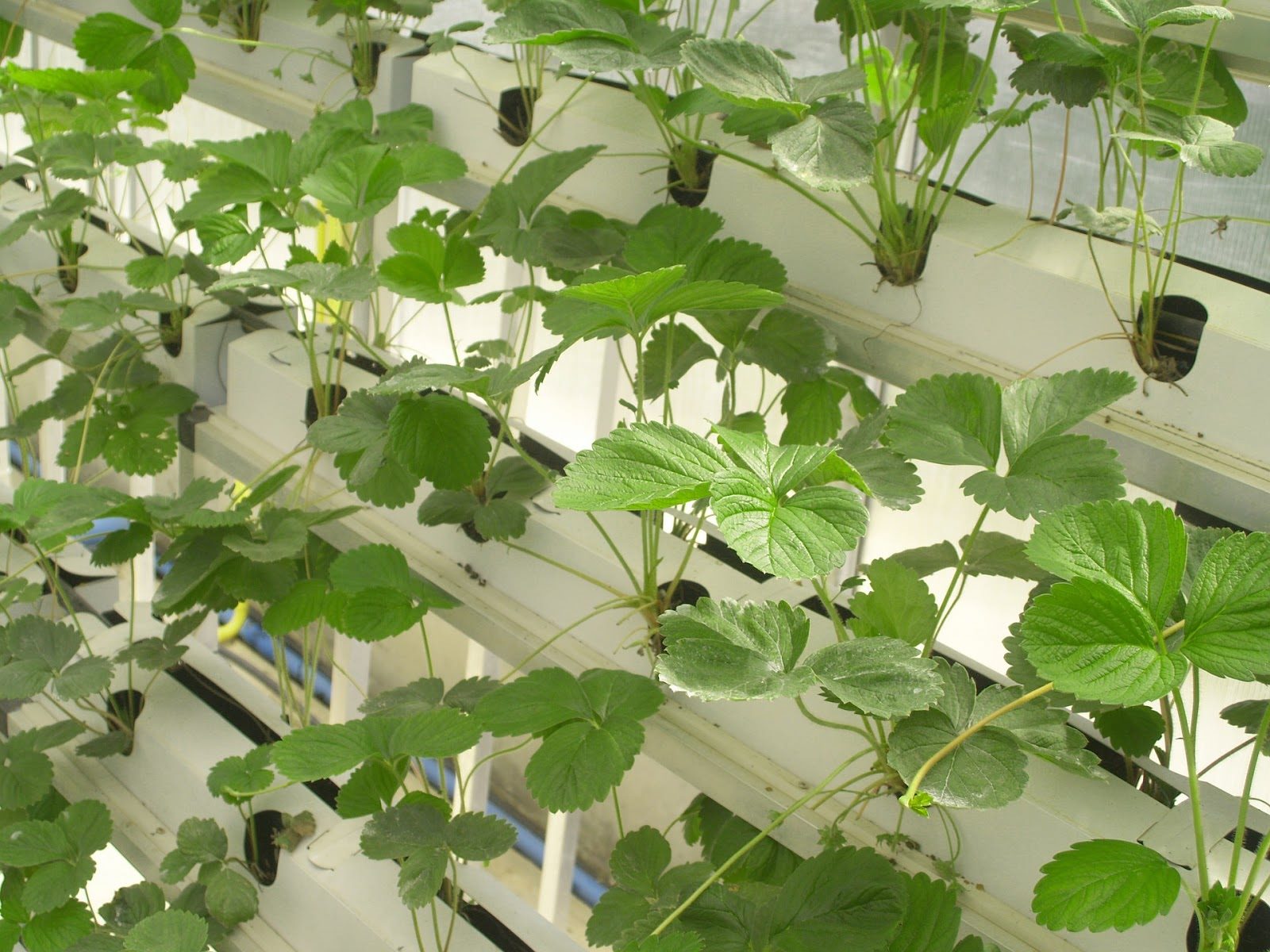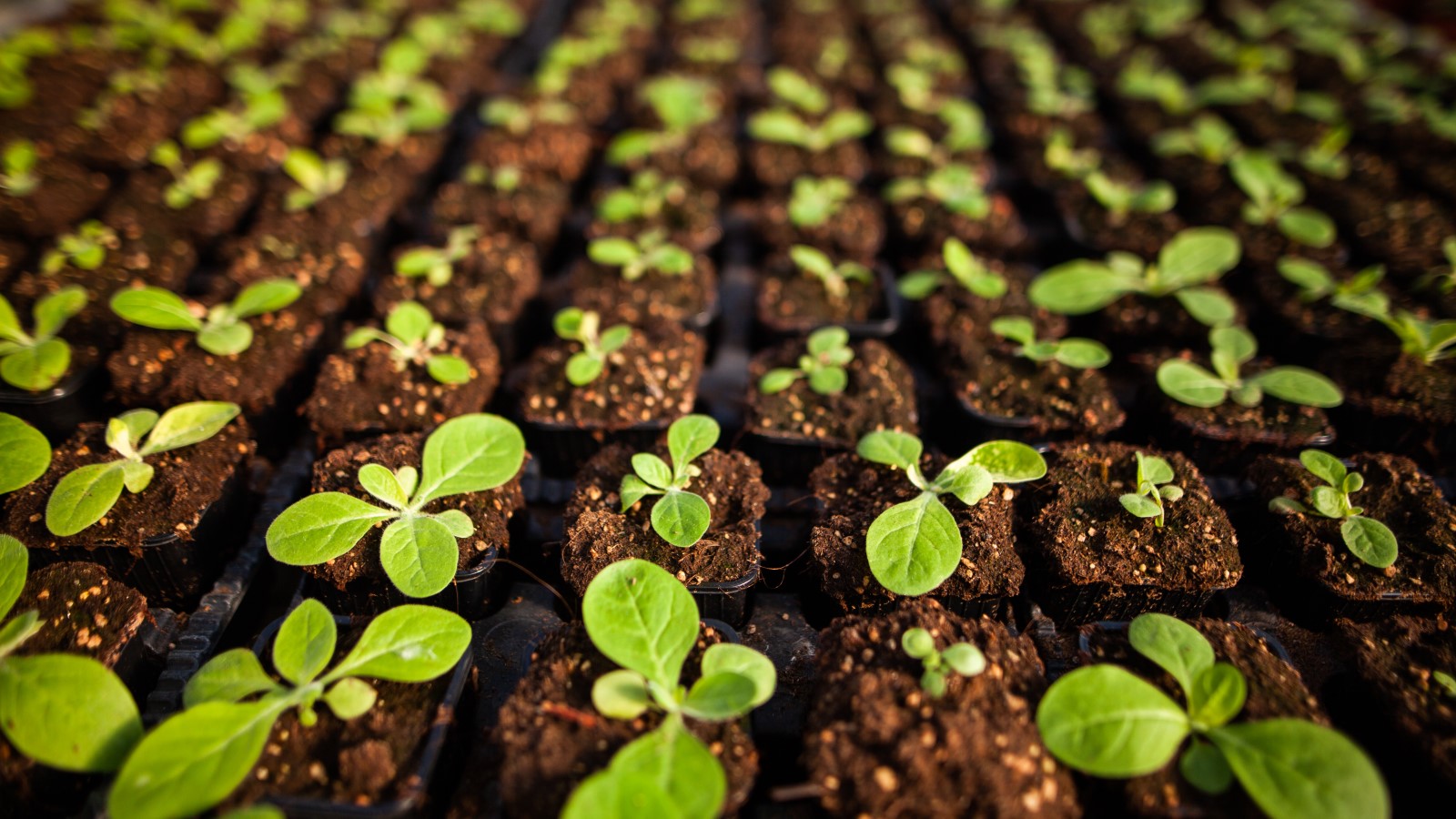Home>Gardening Basics>Understanding Soil>How To Add Iron To Soil Naturally


Understanding Soil
How To Add Iron To Soil Naturally
Published: February 8, 2024
"Discover effective ways to naturally add iron to your soil and improve its nutrient content. Enhance your understanding of soil composition and promote healthy plant growth with these helpful tips."
(Many of the links in this article redirect to a specific reviewed product. Your purchase of these products through affiliate links helps to generate commission for Chicagolandgardening.com, at no extra cost. Learn more)
Table of Contents
Introduction
Welcome to the world beneath our feet, where a complex and often overlooked ecosystem thrives. Soil, the foundation of all plant life, plays a vital role in the health and productivity of gardens, farms, and natural landscapes. Understanding the composition and characteristics of soil is crucial for successful cultivation and growth of plants.
One key element that influences soil health is iron. Iron is an essential nutrient for plants, as it aids in the production of chlorophyll, the green pigment responsible for photosynthesis. Without sufficient iron, plants can suffer from iron deficiency, leading to stunted growth, yellowing leaves, and ultimately, reduced crop yield.
In this article, we will explore the various types of iron deficiency in soil, the benefits of adding iron, and five natural methods to enhance iron levels in your soil. Whether you are a gardener, farmer, or simply a nature enthusiast looking to improve the health of your plants, this guide will provide you with the knowledge and techniques to enrich your soil naturally.
Types of Iron Deficiency in Soil
Iron deficiency in soil can manifest in different forms, each with its own set of symptoms and causes. Understanding these types of iron deficiencies can help you diagnose and address the issue effectively.
- Calcium-Related Iron Chlorosis: This type of iron deficiency occurs when the soil has an excess of calcium, which can interfere with the plant’s ability to absorb iron. This is commonly found in alkaline soils with a high pH level. Symptoms include yellowing leaves with green veins, starting from the newer growth.
- Lime-Induced Iron Chlorosis: Lime-induced iron chlorosis is similar to calcium-related iron chlorosis, but it is caused by the application of lime to the soil. Lime raises the soil pH, making it more alkaline and inhibiting iron availability to plants. The symptoms include yellowing leaves with green veins, typically affecting younger leaves first.
- Iron Excess: While iron deficiency is the main concern, an excessive amount of iron in the soil can also cause problems. High levels of iron can lead to toxicity in plants, inhibiting nutrient uptake and causing damage to the root system. Symptoms of iron excess include leaf bronzing or browning, wilting, and poor growth.
- Iron Deficiency in Acidic Soils: Acidic soils with a low pH level can result in iron deficiency as well. In these conditions, iron becomes insoluble and unavailable for plant uptake. Symptoms of deficiency include yellowing leaves with green veins, starting from the newer growth.
Identifying the specific type of iron deficiency in your soil is crucial for implementing the appropriate corrective measures. In the following sections, we will explore natural methods to combat iron deficiency and restore the health of your plants.
Benefits of Adding Iron to Soil
Adding iron to your soil can have a multitude of benefits for your plants and overall garden health. Here are some key advantages of maintaining adequate iron levels in your soil:
- Improved Chlorophyll Production: Iron is essential for the synthesis of chlorophyll, the pigment responsible for capturing sunlight and converting it into energy through photosynthesis. By adding iron to your soil, you ensure that your plants have the necessary component for efficient energy production.
- Enhanced Plant Growth: Adequate iron levels in the soil promote healthy plant growth and development. Iron is involved in various enzymatic reactions that play a crucial role in key processes such as cell division, root development, and nutrient absorption. By supplying sufficient iron, you can support robust plant growth and help plants reach their full potential.
- Prevention of Iron Deficiency Symptoms: Iron deficiency in plants can result in visible symptoms such as yellowing leaves, stunted growth, and decreased vitality. By adding iron to your soil, you can prevent these deficiency symptoms from occurring and maintain the overall health and appearance of your plants.
- Increased Nutrient Absorption: Iron plays a vital role in the absorption of other essential nutrients, such as nitrogen and phosphorus. When plants have adequate iron levels, they are better equipped to take up these nutrients efficiently, leading to improved overall nutrient uptake and utilization.
- Resistance to Stress and Disease: Iron is involved in the production of enzymes and compounds that contribute to a plant’s defense against stress and diseases. By adding iron to your soil, you can strengthen your plants’ immune systems and increase their resilience to environmental stressors and diseases.
In summary, adding iron to your soil provides numerous benefits, including improved chlorophyll production, enhanced plant growth, prevention of iron deficiency symptoms, increased nutrient absorption, and increased resistance to stress and disease. By ensuring a healthy iron balance in your soil, you set the foundation for vibrant and thriving plants in your garden.
Natural Sources of Iron
When it comes to enriching your soil with iron, there are several natural sources that you can utilize. These sources provide a sustainable and organic approach to increase iron levels in your soil. Here are some common natural sources of iron:
- Compost: Incorporating compost into your soil is an excellent way to boost iron content naturally. Compost is rich in organic matter, which contains trace elements including iron. As the organic matter decomposes, it releases nutrients, including iron, into the soil, enhancing its overall nutritional profile.
- Manure: Animal manure, such as cow or chicken manure, is another valuable source of iron for your soil. Manure not only contributes nutrients like iron but also improves soil structure and fertility. Make sure to age or compost the manure before applying it to your soil to reduce the risk of burning plant roots.
- Coffee Grounds: Coffee grounds are not only a popular way to add organic matter to your soil but also a good source of iron. When used as a mulch or worked into the soil, coffee grounds release iron and other nutrients gradually, providing long-term benefits to your plants.
- Seaweed: Seaweed is an excellent natural source of iron that is readily available and rich in other beneficial minerals and trace elements. You can use fresh or dried seaweed to make a compost tea or incorporate it directly into the soil. As it decomposes, seaweed releases nutrients, including iron, that can be taken up by plants.
- Leafy Green Vegetables: Plants like spinach, kale, and chard are not only nutritious for us but also great for boosting iron levels in the soil. After harvesting these vegetables, you can add their leaves and stems directly to your compost pile. As they break down, they will contribute organic matter and release iron and other nutrients into the compost and eventually into your soil.
By utilizing these natural sources of iron, you can enhance the nutrient content of your soil in an eco-friendly and sustainable manner. These options not only provide essential iron but also contribute to overall soil health and fertility.
Method 1: Composting
Composting is a simple yet effective method for naturally increasing iron levels in your soil. Compost not only adds organic matter to the soil but also releases nutrients, including iron, as it decomposes. Here’s how you can use composting to enrich your soil with iron:
- Collect Organic Waste: Start by collecting organic waste such as fruit and vegetable scraps, yard trimmings, and coffee grounds. Avoid adding meat, dairy, or oily substances, as they can attract pests or cause unpleasant odors in the compost pile.
- Build a Compost Pile: Choose a suitable area in your garden to build a compost pile or use a compost bin or tumbler. Layer the organic waste with brown materials like dried leaves, straw, or shredded newspaper to ensure a good carbon-to-nitrogen ratio (roughly 3 parts brown to 1 part green).
- Turn the Pile: Regularly turn the compost pile every few weeks to provide aeration and facilitate decomposition. This helps speed up the breakdown of organic matter and the release of nutrients, including iron, into the compost.
- Apply Compost to the Soil: Once the compost has fully decomposed and transformed into dark, crumbly humus, it is ready to be used. Spread a layer of compost on top of your soil or incorporate it into the planting areas. This will increase the organic matter content and nutrient availability, including iron, in the soil.
By regularly composting organic waste, you can replenish your soil with essential nutrients, including iron. Compost not only improves the fertility and structure of the soil but also promotes beneficial microbial activity and moisture retention. It serves as a sustainable and environmentally friendly way to enhance iron levels in your soil and support healthy plant growth.
Method 2: Using Organic Fertilizers
Another effective method for increasing iron levels in your soil is by using organic fertilizers. Organic fertilizers not only provide essential nutrients like iron but also improve soil health and fertility. Here’s how you can use organic fertilizers to boost iron content in your soil:
- Select an Organic Fertilizer: Look for organic fertilizers that contain iron as one of the main nutrients. Options like blood meal, fish emulsion, and feather meal are rich in iron and can be easily found at garden centers or online.
- Read and Follow Instructions: Read the instructions on the organic fertilizer package carefully. Pay attention to the recommended application rates and frequency to avoid over-fertilization, which can damage plants or cause nutrient imbalances.
- Apply the Organic Fertilizer: Prior to planting or during the growing season, sprinkle the organic fertilizer evenly around the base of your plants. Gently work it into the topsoil and water thoroughly to help the nutrients, including iron, penetrate into the root zone.
- Repeat Application as Needed: Depending on the specific organic fertilizer and the needs of your plants, you may need to reapply the fertilizer every few weeks or as directed on the package. Regular applications ensure a consistent supply of iron to support plant growth and prevent deficiency.
Using organic fertilizers not only supplies iron to your soil but also improves soil structure, promotes microbial activity, and enhances nutrient availability. It is a safe and eco-friendly method to boost iron levels and nourish your plants.
Method 3: Mulching with Iron-Rich Materials
Mulching with iron-rich materials is an effective way to increase iron levels in your soil while also providing other benefits such as weed suppression, moisture retention, and temperature regulation. Here’s how you can use mulching to enhance the iron content in your soil:
- Choose Iron-Rich Mulch: Select mulching materials that are naturally high in iron. Examples include dried seaweed, grass clippings, pine needles, and composted leaves. These materials not only provide iron but also break down over time, enriching the soil with organic matter.
- Spread a Thick Layer of Mulch: Apply a generous layer of the iron-rich mulch around the base of your plants, ensuring that the roots are covered. Aim for a thickness of 2-4 inches to provide adequate insulation and moisture retention.
- Refresh the Mulch Regularly: As the mulch decomposes over time, its iron content will slowly release into the soil. To maintain a consistent supply of iron, periodically replenish the mulch layer by adding fresh material on top. This will continue to nourish the soil and provide a steady source of iron for your plants.
- Water and Monitor: After mulching, water the area thoroughly to help the mulch settle and initiate the breakdown process. Throughout the growing season, monitor the soil moisture levels and adjust watering as needed to ensure your plants receive sufficient moisture and nutrient uptake.
Mulching with iron-rich materials not only helps increase iron availability in the soil but also improves soil health, regulates temperature fluctuations, and reduces weed growth. It is a sustainable and low-maintenance method to enhance the iron content in your soil and support the overall well-being of your plants.
Method 4: Planting Iron-Accumulating Plants
If you want to naturally increase iron levels in your soil, consider planting iron-accumulating plants. These are plant species that have the ability to take up and store high amounts of iron in their tissues. By incorporating these plants into your garden or using them as cover crops, you can effectively boost the iron content in your soil. Here’s how you can utilize iron-accumulating plants:
- Choose Iron-Accumulating Plant Species: Research and select plant species that are known for their ability to accumulate iron. Examples include sunflowers, marigolds, Indian mustard, and buckwheat. These plants have specialized mechanisms that allow them to extract and store iron effectively.
- Plant as Cover Crops: Plant iron-accumulating species as cover crops during fallow periods or in areas of your garden that need soil improvement. Allow them to grow and develop for a specific period, usually several weeks to a few months, depending on the plant species and the needs of your soil.
- Turn the Plants into the Soil: Once the iron-accumulating plants have reached maturity or completed their growth cycle, cut them down and turn them into the soil. The decomposing plant material will release iron and other nutrients, enriching the soil and making it more available to future crops.
- Rotate and Repeat: Incorporate iron-accumulating plants into your crop rotation plan. By rotating these plants with other crops, you can continuously improve the iron content in the soil over time. This practice also helps break pest and disease cycles and enhances overall soil fertility.
Planting iron-accumulating plants not only enriches the soil with iron but also benefits the ecosystem by attracting beneficial insects and improving soil structure. These plants can serve as an effective and natural way to enhance iron levels in your soil, resulting in healthier and more productive gardens.
Method 5: Amending Soil with Iron Sulfate
If you’re dealing with severe iron deficiency in your soil and need a more immediate solution, amending the soil with iron sulfate can provide a quick boost of this essential nutrient. Iron sulfate is a water-soluble compound that contains iron in a highly absorbable form. Here’s how you can use iron sulfate to amend your soil:
- Test Soil pH: Before applying iron sulfate, it’s important to test the pH of your soil. Iron sulfate is most effective in acidic soils with a pH level below 7.0. If your soil pH is high, it may be necessary to lower it using organic amendments or soil acidifiers before applying iron sulfate.
- Calculate Application Rate: Determine the correct amount of iron sulfate to apply based on the current iron levels in your soil and the plant’s requirements. It’s crucial to follow the instructions on the product packaging or consult a local agricultural extension service for specific guidelines.
- Apply Iron Sulfate: Sprinkle the calculated amount of iron sulfate evenly over the soil surface, avoiding direct contact with the plant foliage. For larger areas, a broadcast spreader or hand-held spreader can help ensure an even application.
- Water Thoroughly: After applying iron sulfate, water the soil thoroughly to dissolve the compound and help it penetrate into the root zone. This will ensure that the iron becomes readily available to the plants.
- Monitor and Reapply as Needed: Monitor the plants closely for any signs of improvement in iron uptake and overall health. If necessary, repeat the application of iron sulfate following the recommended intervals outlined on the product’s instructions. However, it’s important not to overuse iron sulfate, as excessive iron can be harmful to plants.
Amending the soil with iron sulfate provides a quick and effective method to address severe iron deficiency. However, it’s essential to consider the long-term soil health and explore other natural methods of improving iron availability to ensure sustainable and balanced growth in your garden.
Conclusion
Understanding soil and its nutrient composition is key to successful gardening and plant growth. Iron, an essential micronutrient, plays a critical role in various plant functions, including chlorophyll production and nutrient absorption. When soil lacks sufficient iron, plants can suffer from iron deficiency, leading to stunted growth, yellowing leaves, and reduced productivity.
In this article, we explored different methods to naturally increase iron levels in the soil. From composting and using organic fertilizers to mulching with iron-rich materials and planting iron-accumulating species, each method offers a unique approach to enrich the soil with this essential nutrient. Additionally, amending the soil with iron sulfate can provide a quick solution for severe iron deficiency, although careful monitoring and application are necessary to prevent overuse.
By implementing these natural methods, you not only enhance soil fertility and improve plant health but also promote sustainable gardening practices. Organic matter, such as compost and mulch, contributes to soil structure and microbial activity while supplying nutrients, including iron, in a slow-release manner. Planting iron-accumulating species and using organic fertilizers promote a balanced ecosystem and reduce the need for synthetic inputs.
Remember, understanding your soil and its specific characteristics is crucial for targeting and addressing iron deficiency effectively. Consider conducting soil tests to determine the current nutrient levels and pH of your soil, as this will inform your choice of method and ensure the best results.
By incorporating these natural methods into your gardening routine and regularly assessing and maintaining your soil’s iron levels, you can create an environment that supports robust plant growth, vibrant foliage, and bountiful harvests.







